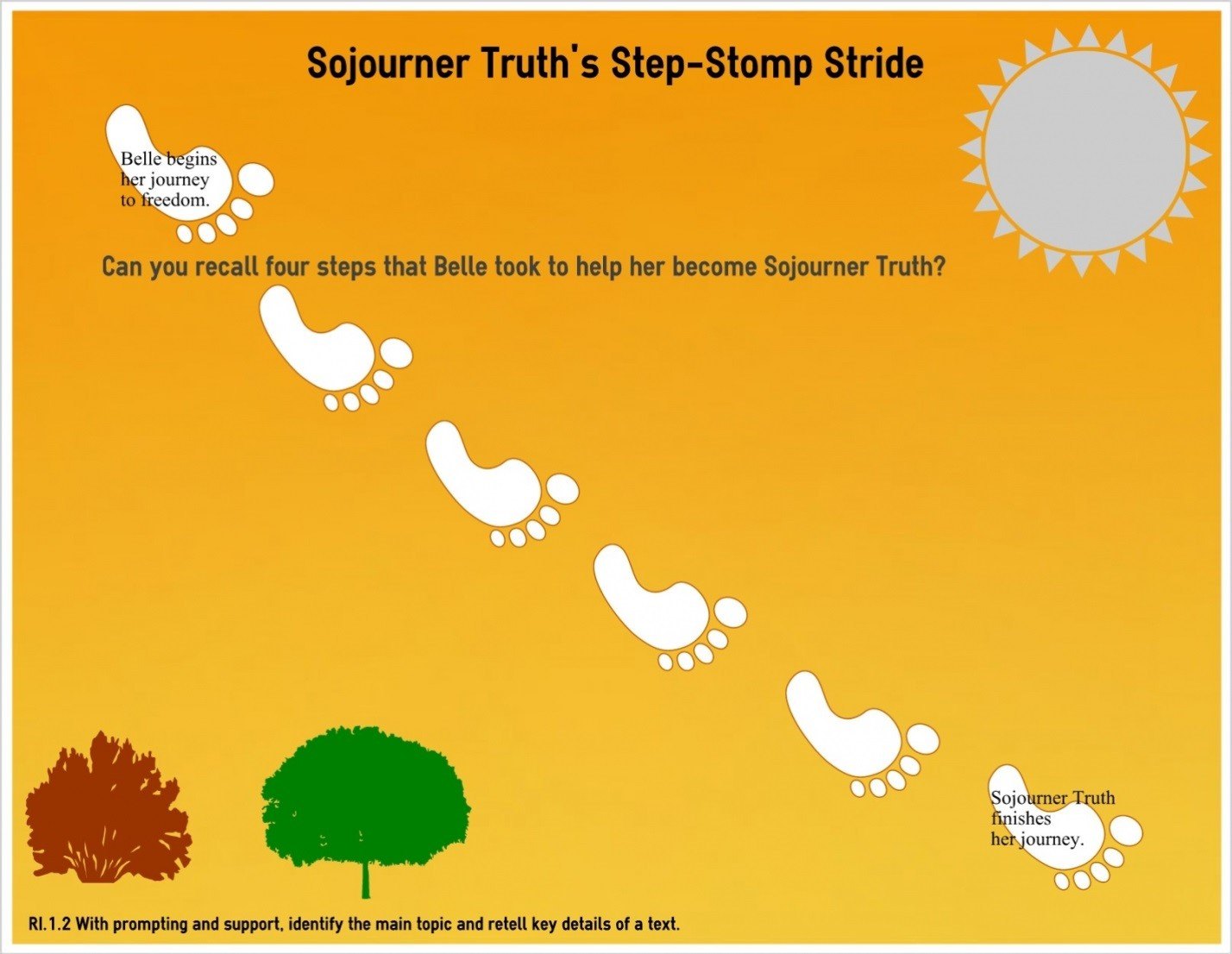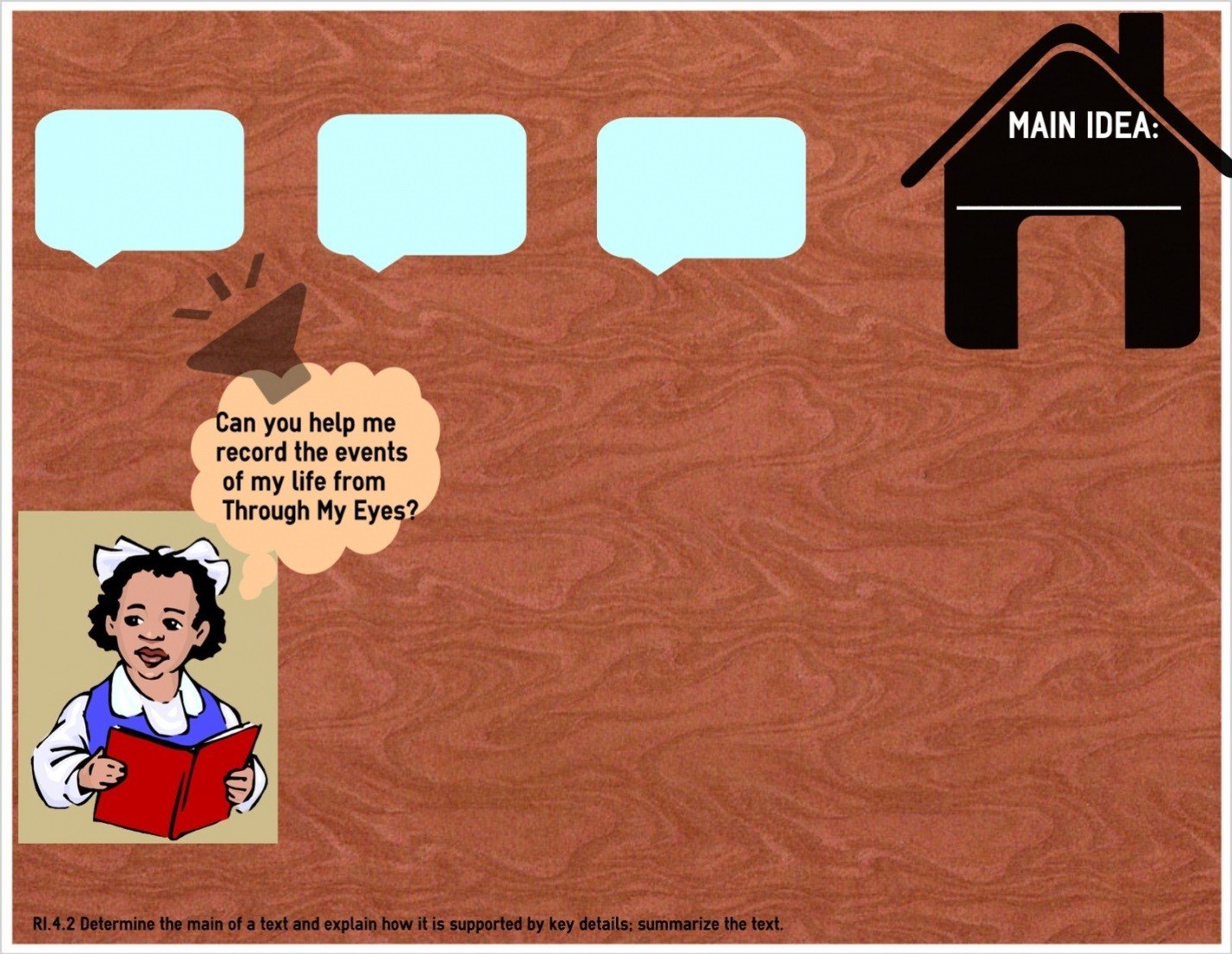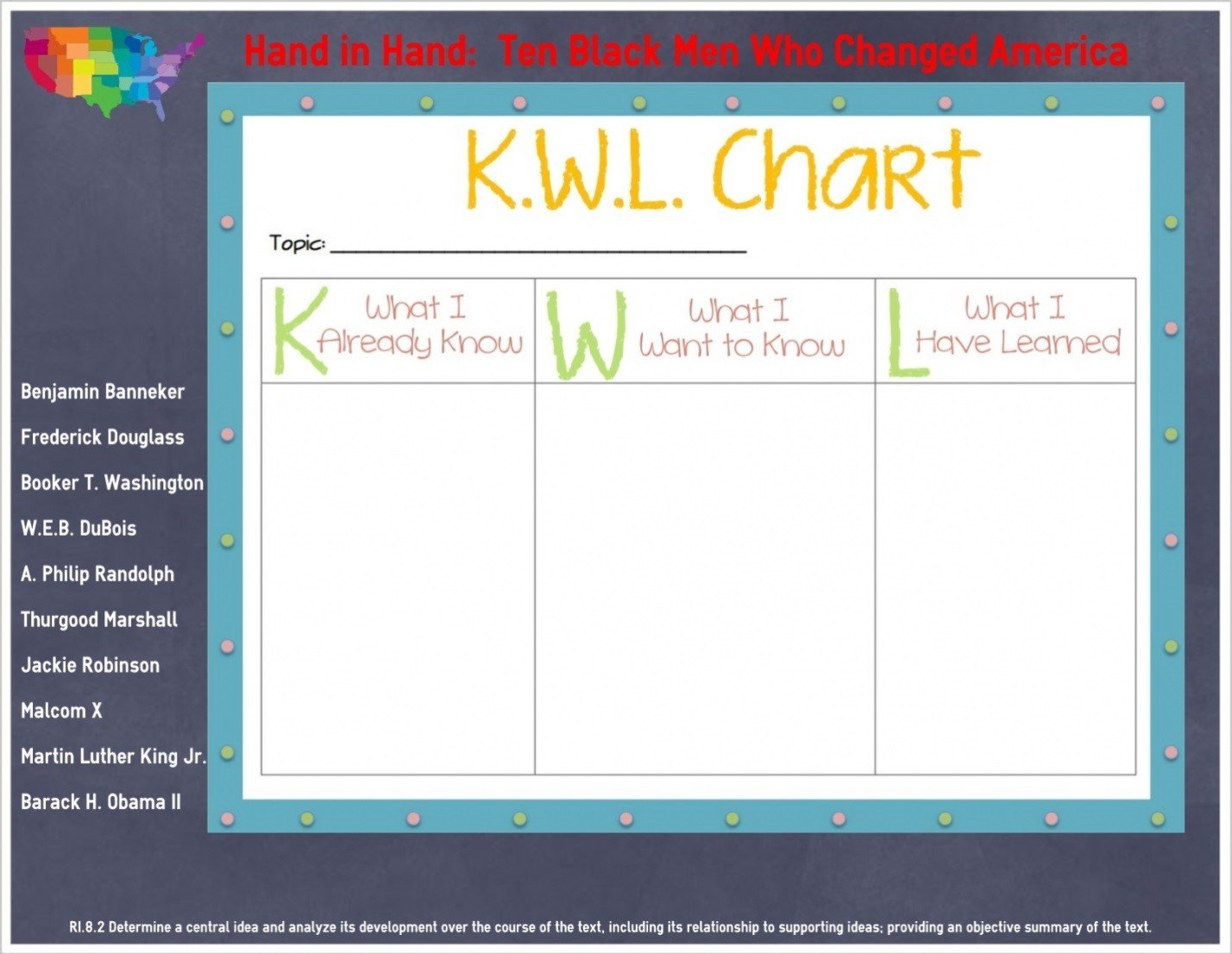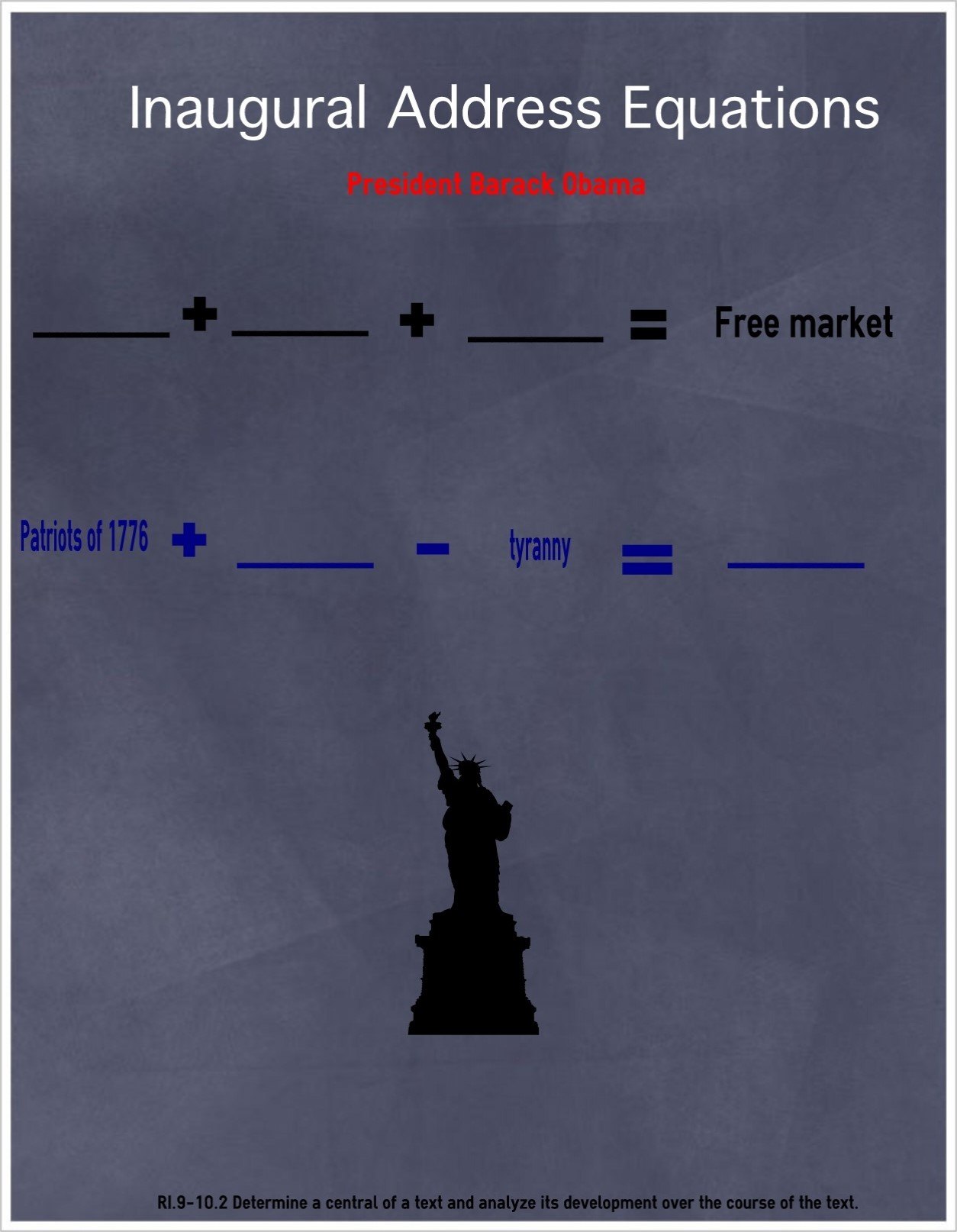Informational reading isn’t for the faint of heart… But, it is for the reading teacher that is instructing students according to the Reading Information Common Core Standards. Exploring informational passages doesn’t have to be mundane and fact-filled. Sure, it a text that is based on facts, statistics, and other details that prove one’s main point. Nonetheless, exploring reading information passages provides a grand opportunity to challenge students to learn more about their favorite animal, historic location, president, or a host of other real topics. Our grade-appropriate activities this week all celebrate the lives of brave African Americans.
Getting started with the Reading Information Standard 2 simply takes a nonfiction text, some curious minds, and the right presentation.
Kindergarten – 2nd grade teachers:
As a quick review, let’s take a look at the Reading Information Standard 1:
- CCSS.ELA-Literacy.RI.K.1 With prompting and support, ask and answer questions about key details in a text.
- CCSS.ELA-Literacy.RI.K.2 With prompting and support, identify the main topic and retell key details of a text.
- CCSS.ELA-Literacy.RI.K.3 With prompting and support, describe the connection between two individuals, events, ideas, or pieces of information in a text.
Sojourner Truth’s Step-Stomp Stride by Andrea Davis Pinkey is the story of Belle, a slave that escaped to freedom. Her freedom brought her a new name. Sojourner Truth was free and ready to spread a message of bravery and truth to people. Continue exploring this phenomenal multicultural biography with students using the following vheme.
This attractive vheme will allow students to think about the transformation that occurred in Sojourner Truth’s life. She was born Belle, the slave, but showed courage that changed her life. This colorful graphic organizer will help students recall her steps towards freedom.
Other extension ideas related to this picture book:
- Create a vheme that compares Sojourner Truth to Harriet Tubman or another famous African American female.
3rd – 5th grade teachers
As a quick review, let’s take a look at the Reading Information Standard 2:
- CCSS.ELA-Literacy.RI.3.2 Determine the main idea of a text; recount the key details and explain how they support the main idea.
- CCSS.ELA-Literacy.RI.4.2 Determine the main idea of a text and explain how it is supported by key details; summarize the text.
- CCSS.ELA-Literacy.RI.5.2 Determine two or more main ideas of a text and explain how they are supported by key details; summarize the text.
Through My Eyes by Ruby Bridges tells the story of a six-year old black girl that showed extreme courage when entering her school. Rather than giving in to the demands of segregation, Bridges took a figurative step towards equality when she entered that building in November 1960. Maximize the discussion that you have with your students by using this colorful vheme as a post-reading activity to aid students in recalling the role of this courageous young girl in Through My Eyes.
Students can work together recall specific details from Through My Eyes, as well as the book’s main idea. This cute vheme will aid students in reflecting on their reading in this post-reading formative assessment.
Other extension ideas related to this informational passage include:
- Encourage students to create a comic strip vheme that has Ruby narrating her story to children alive in 2014.
6th – 8th grade teachers
Texting? Sports? Reading? Most middle school students might be quick to opt for choices 1 and 2, while skipping option 3. Nonetheless, students still need to be exposed to great nonfiction texts that allow them to become more familiar with the following ELA CCSS
- CCSS.ELA-Literacy.RI.6.2 Determine a central idea of a text and how it is conveyed through particular details; provide a summary of the text distinct from personal opinions or judgments.
- CCSS.ELA-Literacy.RI.7.2 Determine two or more central ideas in a text and analyze their development over the course of the text; provide an objective summary of the text.
- CCSS.ELA-Literacy.RI.8.2 Determine a central idea of a text and analyze its development over the course of the text, including its relationship to supporting ideas; provide an objective summary of the text.
What do Benjamin Banneker, Frederick Douglass, Booker T. Washington, W.E.B. DuBois, A. Philip Randolph, Thurgood Marshall, Jackie Robinson, Malcolm X, Martin Luther King, Jr., and Barack H. Obama II have in common?
- All of these historic African Americans have changed America.
- They are all featured in Hand in Hand: Ten Black Men Who Changed America by Andrea Davis Pinkey.
- The following vheme can be used as part of a reading strategy that allows students to reflect on their knowledge before, during, and after reading.
Students can use the space provided before reading the book to critique what they already know about the ten men listed to the left of the KWL Chart. Then they can think of one detail that they would like to know about each man. After reading, this chart can be used as an organization tool that enables students to reflect on their post-reading knowledge of each African American male spotlighted in the book.
Other extension ideas related to this informational passage include:
Have students choose one of the men from the book and complete additional research about his life. Students will then create a vheme that focuses entirely on the selected person.
9th – 12th grade teachers
On January 21, 2013, the 44th President of the United States delivered his second inaugural address. Historians, avid readers, and linguists from all walks of life can appreciate the opportunity to explore this historic text, while enforcing the Reading Information Standard 2. Let’s take a moment to review these important ELA CCSS:
- CCSS.ELA-Literacy.RI.9-10.2 Determine a central idea of a text and analyze its development over the course of the text, including how it emerges and is shaped and refined by specific details; provide an objective summary of the text.
- CCSS.ELA-Literacy.RI.11-12.2 Determine two or more central ideas of a text and analyze their development over the course of the text, including how they interact and build on one another to provide a complex analysis; provide an objective summary of the text.
The following vheme allows students to think outside of the box about the ideas presented by President Obama in his second inaugural address. Students must reflect closely on the main ideas discussed in the address to complete the inaugural address equations.
Other extension ideas related to this picture book:
Have students create a vheme that highlights the core character traits highlighted by President Obama in his inaugural address.
Conclusion
The CCSS ELA Reading Information Standard 2 activities are ready and waiting to make their way into your classroom! With the ability to complete uploads from your own graphics, the opportunity to create creative, engaging handouts and resources is virtually at your fingertips. Join us next week for more examples of how Easelly is correlating with the CCSS ELA Standards to enrich classroom instruction, as we take a look at Reading Literature Standard 3.
We’ve provided you with four great text suggestions that are sure to provide ample instructional opportunity related to the Reading Information Standard 2. What are you waiting for? It’s time to pack away the mundane, colorless review questions and introduce the attractive, well-formatted vhemes that can be created on Easelly.



